If you want to turn heads next spring, then winter is the perfect time for liposuction.
Why? Liposuction can get rid of stubborn areas of fat that’s resistant to diet and exercise—but the results aren’t visible overnight. By its nature, liposuction results in a fair amount of swelling. Patients are often about the same size the day after a procedure as they were before the liposuction was performed, but they are a little sore and bruised. I find patients aren’t truly appreciating their results until about six weeks later, and the final result is a good 3-4 months away. So, while we talk about liposuction having a “weekend of down time” we are referring to the acute recovery phase, but you need to allow time for that swelling to subside so that you can enjoy your results.
Want to look trimmer this spring? Start now!
During the first week of January, I got a request for liposuction from a woman who wants to look good for spring break (she was the impetus for my writing this post). What many people don’t understand is that it takes at least 6 weeks after liposuction to see 80% of the results. Liposuction patients still don’t look their absolute best until 3 to 4 months after surgery—and technically, it takes a year for all of the swelling to subside.
So if you have a special occasion you want to be ready for—a June wedding, a reunion or cruise—plan ahead to allow plenty of time for healing so you can enjoy the results of your liposuction.
How Can Swelling From Liposuction Be Reduced?
The first step in liposuction is to inject a numbing solution called “Tumescent Fluid”, but when the procedure is done, this solution can irritate the tissues in the area that was treated. I find that by allowing the tumescent fluid to drain for the first day after the procedure, there is a lot less swelling and bruising for my patients. This is called the “Open Drainage Technique” and has become one of the most powerful ways we have to decrease the discomfort and swelling of liposuction in the immediate postop period. I still use sutures to close the small 3 millimeter incisions, but I no longer attempt to seal them with a water tight dressing. This technique has made a tremendous difference to my patients and I notice them recovering much faster with less swelling than I saw a few years ago. It is a little bit messy for patients during that first 24 hours after the procedure and they need to change some dressings during that day, but it is clearly worth the trade off for the sake of increased comfort and dramatically less bruising.
Of course, wearing a compression garment in the weeks following liposuction is also a key factor in keeping swelling at bay. It also helps to increase comfort because when tissues swell, they become more painful. Lastly, the compression garment also helps to prevent problems such as a “seroma” (a collection of fluid under the skin) which can frustrate and prolong your recovery.
There are a few herbal supplements available that also claim to reduce swelling. The most popular is a pineapple extract called “Bromelain” and has been clinically proven to help decrease swelling in actual after surgery.
What Are The Most Common Liposuction Areas?
Most people want their tummy suctioned. After all, it is our bellies that we see when we look in the mirror and Lord knows it can be very depressing to see! However, what most patients don’t realize is that while we only see our front in the mirror, the rest of the world sees the other 75% of our torso from the back and sides. When patients really want to look slender I like to suction the flanks as well as the abdomen. In this way, I am essentially treating the entire torso 360 degrees around. In my experience, these patients are a lot more satisfied with their results than the folks who only suction their tummy. In fact, I will sometimes encourage patients to suction their back/flank region instead of their abdomen if they are only able to do one single area. I think suctioning the flanks does a better job of creating a nice waistline than does suctioning the tummy alone.
Requests for liposuction are also many times gender based. Women classically want to remove their saddle sacks, or inner thighs. Men want to remove their “spare tire”. However, in general there are a few basic combinations that we find ourselves suctioning on a regular basis – like the abdomen and flanks combination.
Smartlipo is the original laser-assisted liposuction. It has been promoted as simple and less invasive than classic liposuction. Its maker (Cynosure) says you don’t need general anesthesia for Smartlipo, which is true. But you never did need general anesthesia for lipo; I do 98% of my liposuction procedures under local anesthesia.
I tell patients that Smartlipo is actually more invasive because it is an added step. After we tumesce the tissues a CO2 (carbon dioxide) laser cannula is passed under the skin, which melts the fat, and coagulates blood vessels. That is why there is less bruising than with traditional liposuction. Furthermore, now that the fat has been melted, I am able to use a smaller cannula (the tube for removing fat through liposuction). So, in my mind, Smartlipo makes regular liposuction more efficient and complete.
Does Smartlipo Tighten Skin?
The big question about Smartlipo is whether or not it actually helps to tighten the skin as the company claims it does. That’s been hard to prove despite several studies that claim to demonstrate true “skin tightening”. The truth is that this is a difficult thing to demonstrate and many plastic surgeons are not convinced. Plus, the key research papers on the topic supporting the claim have all been sponsored by Cynosure, who makes the product. So many of us in the field are suspicious of the data presented.
In my experience, I do believe that I can see the skin is tighter when using Smartlipo on the neck and arms. In fact, it can be pretty dramatic, so I know the device is doing something to the dermis (skin). Unfortunately, it’s not so obvious on the belly or outer thighs – where so many people want these procedures done. Other practitioners may disagree, but that has been my experience and I think when you look at my photo gallery, most people would see why I say so.
Smartlipo Streamlines the Neck
Smartlipo on the neck has been the most popular procedure in my office for the last two years. It gives a consistently nice result streamlining the neck, contouring the chin, and even removing jowls. Interestingly, I’ve found that results take longer to develop in men as compared to women, and their results are more subtle. But in some ways that is better for the men, who are so much more discreet about their plastic surgery procedures than women are. (BTW, I find that men will NEVER admit that they have had a procedure done, while many (not all) women will lunch with their friends and talk freely about what they did and how things came out.)
Now, getting back to recovery, in my experience, results for women who have Smartlipo on the neck fall into 2 groups:
-
-
- One group gets better immediately, as this patient who had Smartlipo on a Monday and was thrilled to see results by that Friday.
- The other group lingers 6 to 8 weeks before the results of their neck Smartlipo take shape, but they still get very nice results.Unfortunately, I have not yet figured out how to predict which group a given patient will be in before we do the procedure. I wish I had a crystal ball so that I could tell the patients exactly what to expect ahead of time, but so far, no luck on that one.
-
I think it is also fair to note that some women will complain about lumpiness on their neck that they can feel, but not typically see. I’m not sure if this represents swollen glands and lymph nodes or perhaps some fat that gets hard for a while, but in either case it seems to present itself at about 3 weeks and disappears by 8-12 weeks if it happens at all. Once in a while I also see some streaky skin bands running vertically up and down the neck in female patients.
Arm lift or Smartlipo?
A lot of people who want an arm lift do well with Smartlipo. Unlike an arm lift, there’s no visible incision with Smartlipo. Whether Smartlipo would work well for you depends on whether you have a lot of excess skin on your upper arms. I’ve seen patients who were overweight but had good skin tone have very good outcomes with Smartlipo. It all depends on the skin tone.
Do You Have Areas of Fat that Just Won’t Budge?
You’re not alone. I’ve had personal trainers who couldn’t get rid of excess fat on their flanks, and a nutritionist with 6-pack abs who still had saddlebags. When diet and exercise are not enough, liposuction can be the answer. Take a look at the example below:
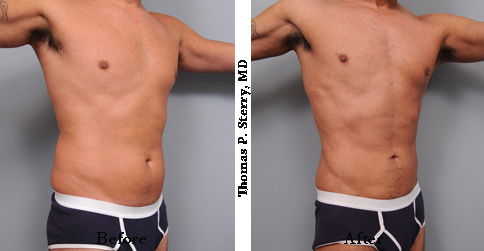
This patient claimed to be in the best shape of his life, but nobody knew it. Once we removed the “insulation” all the hard work on his muscles started to show through.
This patient told me that he was in “the best shape of my life, but nobody knows it!”. He told me that he could lift more and run a 5K faster than he ever had before. He was living in the gym 90 minutes at a time 4 days each week, but he didn’t have the rewards he was hoping for. A little “liposculpture” (aka: high definition liposuction), helped to remove the fatty tissue that was masking all of his hard work. He now feels like all of his hard work was finally paying off.
What about Vaser liposuction?
Vaser liposuction has been around a long time. It is very similar to Smartlipo except that it’s based on ultrasound energy rather than a laser.. Is it better than Smartlipo? The question is, in whose hands? Both technologies do essentially the same thing—they are using some kind of energy to melt fat. Some of its proponents claim that it is more powerful and more useful than other modalities because it can melt a wider area of fat than Smartlipo. I argue that this is a double edged sword because if we damage too much fat in an un-artistic way, then we risk problems like divits, dents, and grooves that are visible after the procedure is done.
Both Vaser and Smartlipo have claims of skin tightening. Smartlipo Triplex has 3 different wavelengths: 1064 nm (which is the original), 1320, and 1440—which is much more powerful than the other wavelengths. That is to say, the 1440 wavelength has 40 times the fat melting capacity of the others and brings Smartlipo closet to the effectiveness at treating large areas as the Vaser ultrasound technology. Again, always remembering that maybe more fat melting isn’t necessarily better.
Are there any non-invasive fat-reduction techniques?
It would be great if we could remove fat without needing any invasive procedure at all. And while everyone wants less invasive procedures, some people will do anything to avoid having “surgery”. I understand that, but right now I see a lot of patients who have tried going the strict Non-Invasive route and come to me later because they are unsatisfied with their results. It is generally accepted in the plastic surgery world that while these methods are desirable, they’re just not as effective as liposuction…yet. As of 2015, removing the fat from a given area with a suctioning technique remains the gold standard in body contouring. That said, this essay wouldn’t be complete if I didn’t mention a few of the strictly Non-Invasive fat removal techniques available and explained how they work:
- Coolsculpting uses large suction cups attached to the body to basically freeze the unwanted fat. Each treated area takes about an hour to complete (that is two hours for the right and left sides). During the ensuing weeks, the fat cells in the area die and your body absorbs those cells. After a session, the treated fat looks like a stick of butter because it assumes the shape of the suction cup and needs to be massaged flat again. Cool sculpting can get results, but they’re very subtle. Some people who have come to me for a consultation have said they’ve had diy coolsculpting, but were unsatisfied and were now looking for “real” results.
- Liposonix is a transdermal (through the skin) ultrasound device. A probe is placed on the skin and ultrasound waves are sent through the depths of the tissues, in theory to melt fat below the skin. Demonstration videos using pig fat and the like look pretty cool. Unfortunately, the results are not all that impressive, from what I have seen. Finally, I have heard that the treatments are painful.
- Vanquish is another transdermal device, this time using laser energy to penetrate the skin and melt fat. Again, it seems to work, but results are fairly subtle…so far.
All of these non-invasive technologies have some merit and are very intriguing. But I don’t think we are yet at the point where I would trust one of these gadgets to make a New York City patient happy. So when it comes to non-invasive ways to remove stubborn fat, we’re not there yet. I need to deliver for my patients, and liposuction remains the state of the art.
For best results, choose your surgeon and facility wisely
If you’re having liposuction, it’s important to choose a board-certified plastic surgeon and have your surgery in an accredited surgical facility for best results and the safest care.
Considering liposuction? Schedule a consultation.


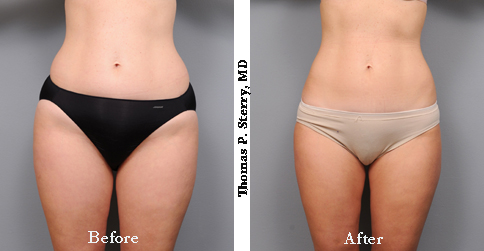
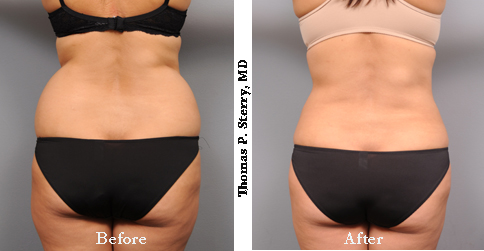
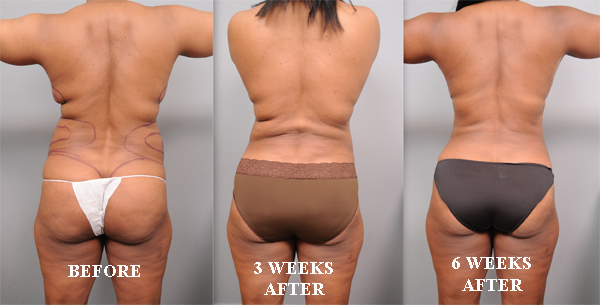
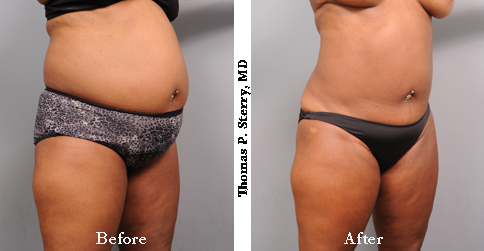
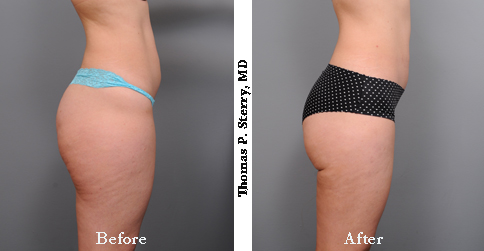
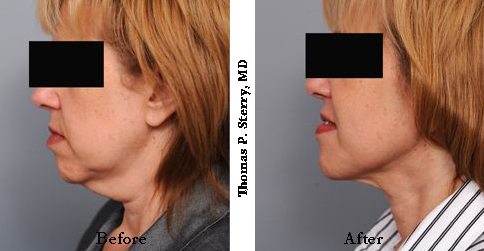
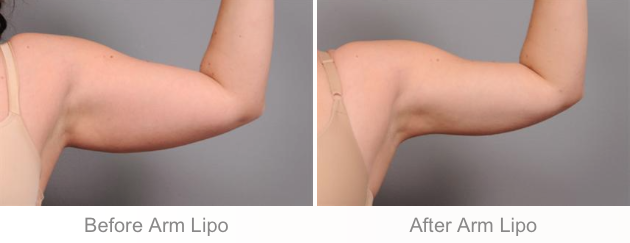
Leave a Reply